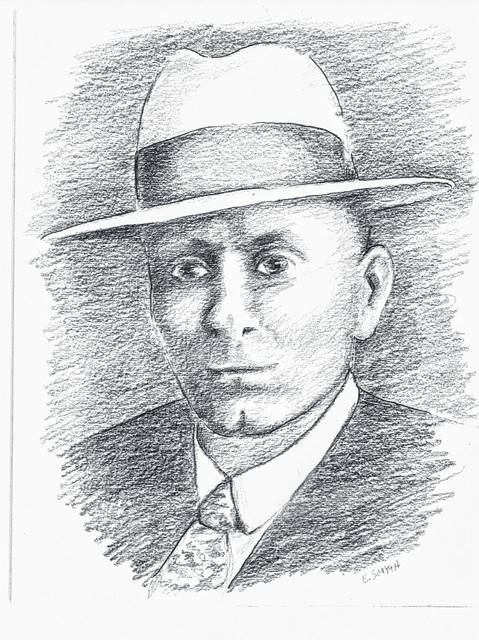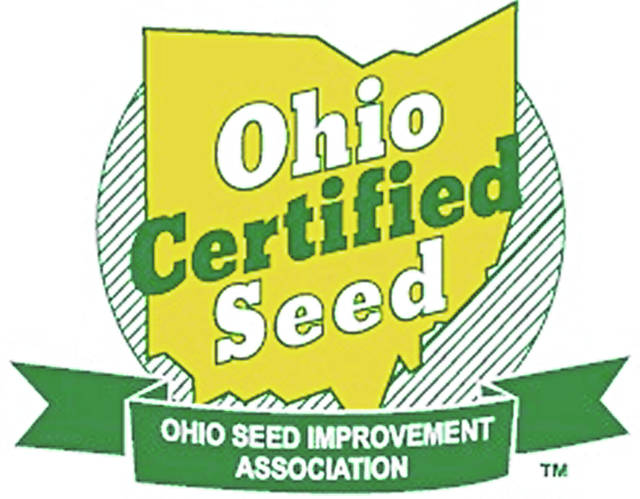

One of Fayette County’s most progressive farmers in the first quarter of the 20th century was Floyd Everett Eichelberger, widely known throughout Ohio and the other Corn Belt states for growing and selling seed corn of the highest quality.
Eichelberger was born on Oct. 1, 1881 at the family’s 140-acre farm on the State Road, three miles east of Jeffersonville. He operated the farm all of his adult life. He was a graduate of Jeffersonville High School and The Ohio State University’s College of Agriculture.
Eichelberger was a founding member of the Ohio Seed Improvement Association (OSIA) established in 1908. A farmer’s seed corn earned the OSIA’s imprimatur of “certified” after the association had determined through tests and field inspections that a given type of corn germinated at a high rate and was uniform, distinct, and stable. OSIA representatives inspected the corn while growing in the field and after it had been shelled and stored.
Floyd served as president of the OSIA in 1920, 1925 and 1926. His election three times to the OSIA’s highest office is testimony both to his reputation as a seed corn expert and his popularity with Ohio’s leading corn growers.
The certified seed corn that Eichelberger grew and sold was a derivative of a corn type developed in the 1850s by Edmund Clarridge, a Fayette farmer who lived in the northwest corner of the county. Floyd called his seed corn Eichelberger’s Improved Clarage. The corn it produced ripened a bit earlier and had a greater tolerance for wet and dry weather than most other varieties of corn grown in Ohio a century ago. Many livestock feeders believed that the flinty, bright yellow kernels of Eichelberger’s Improved Clarage were more nutritious for their hogs and cattle than the more starchy types of corn available to stockmen in the 1920s.
Floyd’s knowledge of seed corn helped him grow large yields of corn on his own farm. He often averaged 80 bushels of corn per acre at a time when the average per-acre corn yield in Fayette County was around 45 bushels.
Eichelberger was a consistent winner at corn shows held in Ohio. He took home the grand prize at the Ohio Corn Show in February 1916 for having the best single ear of corn grown in 1915. His prize-winning ear topped more than 350 other entries. At the Ohio Corn Shows in 1924, 1925, and 1926, he won prizes for exhibiting the best bushel of ear corn.
In 1917, The Ohio State University’s College of Agriculture created a Hundred Bushel Club to recognize farmers who raised 100 bushels of air-dried shelled corn per acre on 10 acres. Ohio State’s county extension agents measured the 10-acre plots and verified the yields. Floyd qualified for the Hundred Bushel Club in 1923 by growing 101 bushels of corn per acre on 10 acres, and in 1925, his yield of 122 bushels per acre on 10 acres was the club’s second highest yield of corn grown that year.
The Ohio Farmer magazine, the print voice of Buckeye State agriculture, reported that Eichelberger’s Improved Clarage was the seed corn of choice for most members of the Hundred Bushel Club. By the end of 1925, 42 farmers had qualified for membership in this fraternity of elite corn growers.
In 1925, Ira Marshall of Hardin County, Ohio, set a new world’s record when he grew 160 bushels of corn per acre on 10 acres. The seed corn he planted to attain the record was Eichelberger’s Improved Clarage. Marshall was named “Corn King of the World” and invited to Washington D. C. to meet President Calvin Coolidge.
Floyd partnered in 1925 with W. W. Montgomery, Fayette County’s extension agent, to persuade dozens of local farmers to enter their best ears of corn in the National Seed Corn Show held in Chicago. Farmers from 1,731 counties in 46 states entered 27,411 ears in the show’s many categories of competition. Largely due to Eichelberger’s leadership, Fayette County corn growers sent 2,410 of their finest ears to the Chicago show sponsored by the Sears & Roebuck Agricultural Foundation. This was the largest number of ears entered by any county in the United States, and for the achievement, the Fayette County Extension Service was presented a check for $1,000. (The money was used to promote Fayette County’s annual corn show.)
Besides growing corn, Floyd raised purebred Duroc hogs. He qualified each year from 1924 through 1927 for membership in the Ton-Litter Club, an honorary organization established in 1923 by Ohio State’s College of Agriculture to encourage an increased production of pork per sow. For admission to the Ton-Litter Club, a farmer had to produce one ton of pork from the pigs of a single litter within 180 days (six months) of farrowing. By mid-1927, 112 farmers belonged to the Ton-Litter Club, having raised collectively 153 ton litters.
In 1926, The Ohio Farmer magazine created a “Master Farmer” degree to honor 20 farmers for their lifetime achievements and contributions to Buckeye State agriculture. Floyd Eichelberger was one of the men so recognized. A three-man panel of judges selected the 20 from 138 farmers nominated by citizens of their home counties. The honorary degree was conferred not only for a recipient’s accomplishments in farming but also for his leadership in community and religious life. Floyd’s selection as a “Master Farmer” is all the more significant because in 1926, there were more than 200,000 farms in Ohio.
Eichelberger died from complications of appendicitis in June 1927. He was 46-years-old. At the time of his passing, he was the only farmer to have qualified for the Hundred Bushel Club and the Ton-Litter Club in the same year (1925). He was also a director of the Ohio Seed Improvement Association; treasurer of the Fayette County Farm Bureau, which he helped organize in 1919; and vice president of the Fayette County Agricultural Society, formed in 1923 to manage and revitalize the Fayette County Fair. He had been an active member of the Jeffersonville Methodist Church and Jeffersonville’s Knights of Pythias Sunflower Lodge.
Floyd Everett Eichelberger is one of the many progressive farmers whose achievements have brought distinction to Fayette County. His illustrious career is a happy reminder that agriculture has always been Fayette County’s leading industry.



